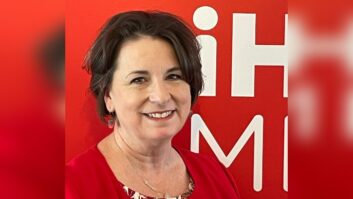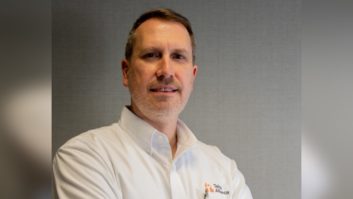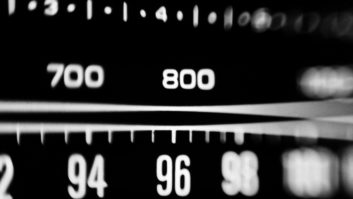A small market with big ideas
Mar 1, 2005 12:00 PM, By Matt Lightner
A few years ago while contracting at WCCSAM in Indiana, PA, the manager announced that Renda Broadcasting was purchasing the station. I immediately wondered why Renda Broadcasting would buy an AM station in Indiana, PA. Indiana is a small, unrated market that is best known as the Christmas tree capital of the world, the birthplace of Jimmy Stewart and the home of Indiana University of Pennsylvania. Renda owns stations in Pittsburgh; Oklahoma City; Tulsa, OK; Jacksonville, FL; Ft Myers, FL; and Naples, FL; which are all much larger than Indiana, PA. As time went on, Renda purchased WLCY-FM in Blairsville, PA, and WDAD-AM and WQMU-FM in Indiana, PA. I later learned that Anthony Renda grew up in Indiana, PA, listening to WDAD. In fact, his first job in radio was with WDAD, where he worked as a part time announcer.
In January of 2004, plans were announced to consolidate all the stations into a facility in downtown Indiana. Renda wanted to bring back an old time feeling to the stations by having large impressive studios surrounded by glass so everyone could see them as they walked or drove on busy Philadelphia Street. Renda purchased the former Gati Pharmacy building that is across the street from the world-famous Jimmy Stewart Museum.
The three air studios for WLCY-FM, WQMU-FM and WCCS-AM (top to bottom). Wheatstone or Raxxess furniture was used in each studio, depending on its typical use.
Production One, the main production studio, has a look and feel similar to the main air studios. It also has Wheatstone furniture because of its regular and sometimes heavy use.
Production Two sees lighter regular use. The modular furniture will allow Renda to easily reconfigure this studio later if the need arises.
Looking down studio row while standing in the lobby. This creates a showcase of the studios for visitors.
The general manager of the stations, Mark Bertig, suggested that Renda hire my company, Lightner Electronics, as the technical designer, system integrator and project manager of the technical facility of the project, based on the company’s past facility projects in small and large markets.
We started to work with Renda’s staff to select the equipment and create a budget. We quoted the design and project management part of the project, the security and card access system and the broadcast equipment. We began work in in late March 2004 to manage the build-out and supply the equipment.
Local help
Renda worked with local architect Tom Harley, who designed the layout of the building. After the initial design was finished the CAD files were sent to Lightner so we could begin our design process. While the design of the offices and studios were impressive, we saw some major red flags. The first was the satellite dish. Where would we put a 3.8m dish? The site had no visibility to AMC-8. The second major challenge was the STL path. Across the street was a five-story courthouse blocking the view of the transmitter site.
To tackle the satellite dish problem, we immediately called the architect and informed him we needed one and maybe two 3.8m dishes on the roof, as well as poles to mount the STL dishes and other antennas. We provided the specifications and wind loading information on everything. We chose a Patriot Systems dish because we have installed them before and have had excellent results with them.
With the necessary information in hand, the architect consulted a structural engineer for the solution, which involved a large crane, eight cubic yards of concrete, four 35′ steel beams with cross members and metal poles. It was enough to keep a welding crew busy for days. The large 35′ � 15′ pad had to be attached to the structure of the building to support the weight of the dish and itself.
The next challenge was the STL path that looked directly at the large courthouse across the street. The courthouse is more than two stories higher than the studio building, and it completely blocks the view of the transmitter site. Would a 950MHz STL work through the building? Possibly, but we could not afford to guess with signals for two FMs and two AMs. I needed multiple 950MHz STLs or a T-1.
The telephone company quote for monthly service on a T-1 was more than $2,000 per month. That was out of the question, so wireless T-1s seemed like a good choice. I worked with a tower crew who had experience in cellular work, who told me that most of the cell sites are upgrading their 2.4 and 5.8GHz T-1 links to different radios or fiber for more bandwidth and to resolve interference issues. He suggested that I look for reconditioned 5.8GHz Western Multiplex Lynx radios.
While I was looking for the radios, I had the general manager of the radio station trying to find a building that we could use as a hop site. He was able to find a building only three blocks away that had a direct view to the transmitter site and studio.
I then purchased a dual 5.8GHz T-1 radio to transmit to the hop site. At the hop site I used a single 5.8GHz T1 radio and a 2.4GHz T-1 radio to transmit to the transmitter. I was not worried about interference on the 5.8GHz path from the studio to the hop site because it was only three blocks, but the transmitter site had multiple 5.8GHz antennas on the tower next to us. For this reason I installed the 2.4GHz radio in case there was any interference with the 5.8GHz unit. After installation I had no data errors on any of the links. The 5.8GHz path is used for program audio, and the 2.4GHz path is used for a data link to back up the Mediatouch system file server to the transmitter site.
Now that the T-1 radios were in place and working I needed a way to encode the audio into the T-1 channel. I chose the Moseley Starlink SL9003T1 configured for three stereo channels to the transmitter site using MPEG at 384kb/s. We also have an uncompressed dual mono channel to return both RPUs from the transmitter site. When the Starlink units arrived I plugged them in and within 10 seconds they locked and I had audio.
With all the problems out of the way it was time to move on with the project. While I was working on the STL and satellite dish problems, my crew installed the security system, the data cabling and the CAT-5 interconnect wiring between studios. We chose shielded CAT-5 cable and Krone blocks for their multipurpose capabilities and resistance to RF interference. At this point most of the sources were analog, but we wanted to make sure we had the wiring in place to handle more digital sources in the future. We also worked with the electrical contractor to install all of the cable trays into the studios, and the 7KVA UPS system to back up the on-air equipment.
The rack room
Once the construction work was done on the building, it was time to build the rack room. We installed six Atlas Sound 44-space racks to house all of the equipment. The first order of business was to start loading the rack where the CAT-5 cable terminated to patch bays for the office network, Mediatouch network and phone system. With the flexibility of all the patch panels in one rack we can easily move any port in the building, and make it a phone jack or data jack.
Next was the audio distribution rack. The heart of this facility is the Audioarts ADR-32 router, which provides 32 stereo inputs and 32 stereo outputs, or 64 x 64 mono. The mono capability allowed us to feed mono sources and mix them to a stereo output. This is invaluable when you only need the left or right channel of a satellite receiver to feed the studios. We connected all of the satellites, remote equipment and program outputs from the studios into the ADR’s inputs. The ADR’s outputs feed the studios so all of the studios could pull up any source equipment using the X-Point routing software. The other ADR outputs were connected to the audio processing chain through the LEI custom Emergency Bypass System. This allows any studio or any source to feed any of the stations. It makes life easy when you need to troubleshoot a problem with the studio. A touch of a button and you can route the Mediatouch mix output for that station directly to the transmitter.
It sounds like this puts all our eggs in one basket if the router should fail, but we compensate for this by running all the program outputs through the LEI Bypass System. If silence is detected or if audio is manually switched, the Bypass routes the program outputs of the studios directly to the audio processors bypassing the router.
The studios
As crews worked on the rack room the studios were also built. Renda wanted cherry wood trimmed furniture in the on-air and main production studios. Wheatstone was able to accommodate this request. The metal frame design of the furniture made for fast assembly. I chose Audioarts R90 consoles. I like the R90s because of their reliability and ease of use for the operator. Because the studios were completely designed in CAD, we were able to create a complete pre-wire of the consoles to Krone blocks ahead of the on-site work. We also had the cut-out templates designed for the countertops so we could cut all the holes for the turret, the monitor arms, microphone risers and wires in one shot. This saved a great deal of time. Out of all the gadgets in the on-air studios, the station management loves the Wheatstone cherry microphone risers, and the O.C. White black microphone arms with the gold springs.
The remaining production room and voice track studios use Raxxess studio furniture, which is modular and easily configurable. It is perfect for the smaller sit down studios.
I saw the sign
Now that all the stations are on the air, we saved the fun project for last: a 1′ x 40′ scrolling sign that wraps around the building. It took a little convincing to get a permit for the sign; residents thought it might cause traffic accidents. But the good news is that the sign has been ordered from Daktronics and should be installed by the end of March.
The sign will scroll local and national news, along with a scroll of what song or program is playing on each station. An LEI employee is familiar with Mediatouch and knows Visual C programming, so it shouldn’t be too great of a challenge. I just can not wait to play with a 40′ scrolling sign.
Lightner is president of Lightner Electronics.
Equipment list
360 Systems Short Cut
Aphex 320A Compellor
Aphex 323A Compellor
Atlas Sound equipment racks
Audioarts ADR-3232A Audioarts R90
Audioscience 5111, 5042
Avocent Longview LV-620AM
Behringer-VX2000 Ultra-Voice
Broadcast Tools Connect O’ Pads
Broadcast Tools SS16.4
Broadcast Tools SS8.2
Broadcast Tools TMT-2 matching interface
Chief Manufacturing FSC-310
Crown D-75A
Denon DN-C635
Denon TU-1500RDP
Dixon Systems LM-100B
Electro-Voice RE-20
ETA System PD-8
Gepco GA72408GFC eight-pair
Gepco GA72412GFC 12-pair
Henry Engineering SuperRelay
HP 2626 Procurve Network switch with Gigabit (Mediatouch)
JK Audio THAT-2 telephone handset tap
Krone 6652-1-880-10 termination blocks
Lightner Electronics console pre-wires
Mediatouch Imedialogger
Mediatouch Oplog automation system
Middle Atlantic CD holder
Middle Atlantic SECL-4 Plexi security covers
Middle Atlantic UD3 3-space drawers
Mohawk/CDT M54783 shielded CAT 5 cable (audio interconnects)
Moseley DSP-6000 digital STL System
Moseley SL9003T1 T1/E1 digital transmission system
MOTU 2408-Mk3 audio interface (Imedialogger)
O.C. White 61900BG Black and Gold microphone arms
Patriot PRT380AZL 3.8 meter satellite dish
Planar PT-1500M LCD touch screens
PolyPhaser coax lightning protectors
PowerWave Ferrups 5.3KVA UPS
Proxim / Western Multiplex Lynx SC6 5.8GHz Dual T1 microwave radio
Raxxess Config-U-Raxx studio furniture
Scala PR-950 STL antenna
Sony MDS-E10 rackmount minidisk recorder/player
Symetrix 528E microphone processors
Symetrix 581E distribution amp
Symetrix Airtools AT6000 audio delay
Tannoy Reveal studio monitors
Telos 1X6 digital phone systems
Telos 2001-00023 switch consoles
Telos One Digital Phone Hybrid
Wheatstone mic risers with talent panels
Wheatstone Eclipse furniture












